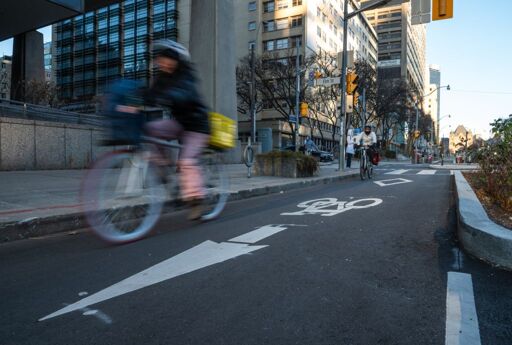

As people have commented on all these posts since the incident appeared, we have no info on the incident.
Could be evidence of assault above and beyond that required for self defense (injuries to the intruders back, for example, from him attempting to run away, or signs of the fight continuing from inside to the exterior). Generally self defense is accepted with a good degree of latitude in Canada/(would love to find any examples of cases where someone defended themselves appropriately yet were convicted) , but obvious attacks that aren’t self defense still are assault.



I don’t disagree, but the problem is that people are terrible judges of how fast they can react and terrible judges of risk. Tailgating is a major cause of vehicle accidents, and is purely an individual failing. Leaving enough space between the car in front of you and yourself (a well known guideline of 3s in clear weather) is your responsibility and yours alone. Don’t care if you’re tired, angry, emotional, whatever. If you are getting behind the wheel of a 2+ tonne machine, you need to be responsible for that. Unfortunately most people aren’t.
We can argue and disagree on the factors at play, but fundamentally, I don’t agree with your thought process where ALL responsibility is offloaded from the individual to a large, faceless entity of ‘society’. For sure, many people are not being set up to succeed and be safe while driving, and most shouldn’t need to drive at all. I agree - push more bike lanes, push more transit, get trains to actually run alongside major highways to remove single-car commuting vehicles that destroy our environment.
But how can you be claiming that any action taken to slow the deaths and injuries happening by enforcing speed limits is counterproductive action?
40% of speeding drivers involved in fatal crashes are 16-24 years old. 75% of pedestrian fatalities occured on urban, high density roads like those Ontario is in the middle of putting speeding cameras onto. When you consider that pedestrians hit at ~30km/hr has a 5% chance of death, while those hit at 45km/hr has a 45%, and those hit at 60km/hr are at 85% chance of death, there is a very serious argument to be made to enforce 40 and 50km/hr speed limits. By slowing people from 70km/hr to 50km/hr, we can drastically improve the safety of pedestrians and cyclists using the road or sidewalks. In community safety zones with 40km/hr speed limits, enforcing them can increase chance of survival by 40%. Add into that the enormous benefit we would see from a healthcare standpoint when you no longer need to provide care (or provide as serious of care) for accident victims?
How can you be arguing AGAINST speed cameras instead of calling for their implementation everywhere and demanding that funding be reallocated for decarbonization and street redesign? The funding those can pull in is enormous, and as compliance increases, street reconstruction can provide the further increase in fatality reduction.
https://www.radarsign.com/traffic-calming-stats/ https://crashstats.nhtsa.dot.gov/Api/Public/ViewPublication/811090